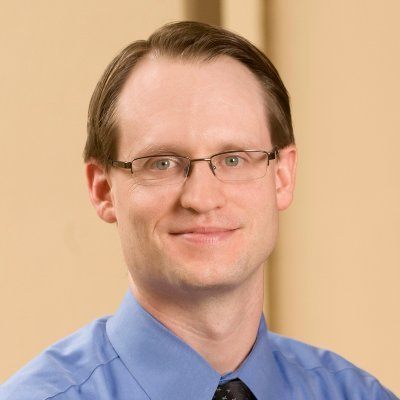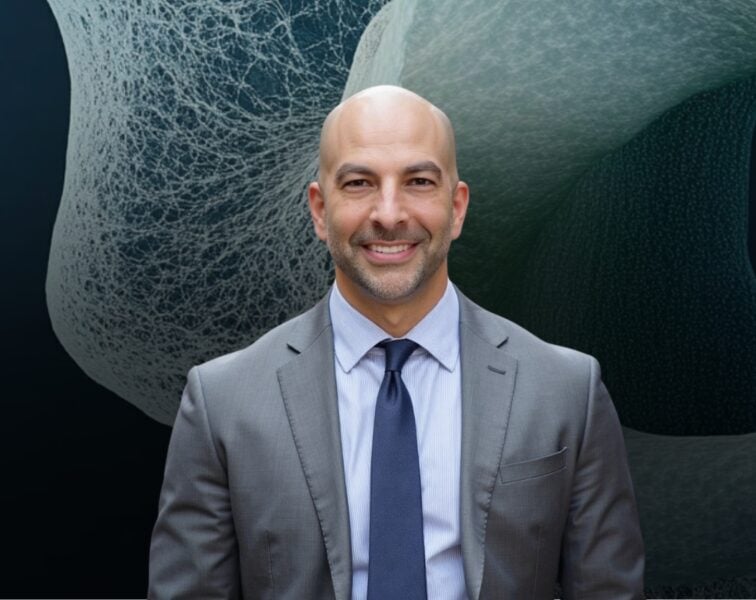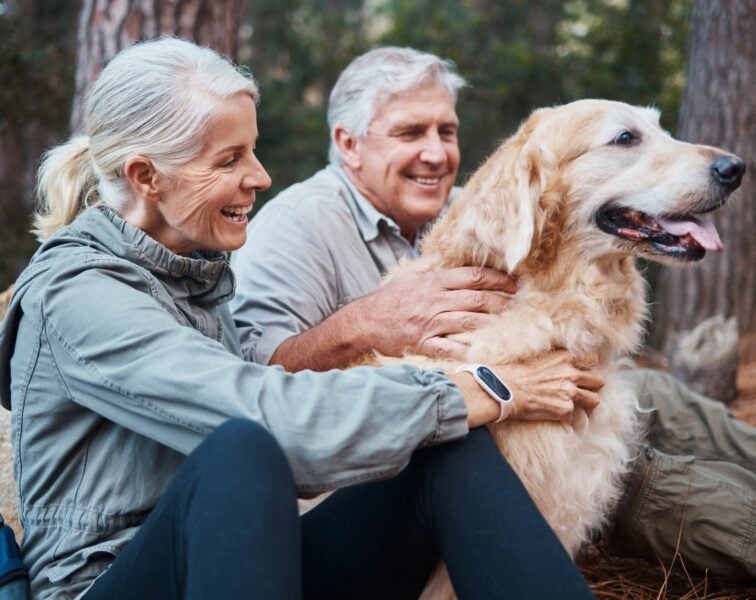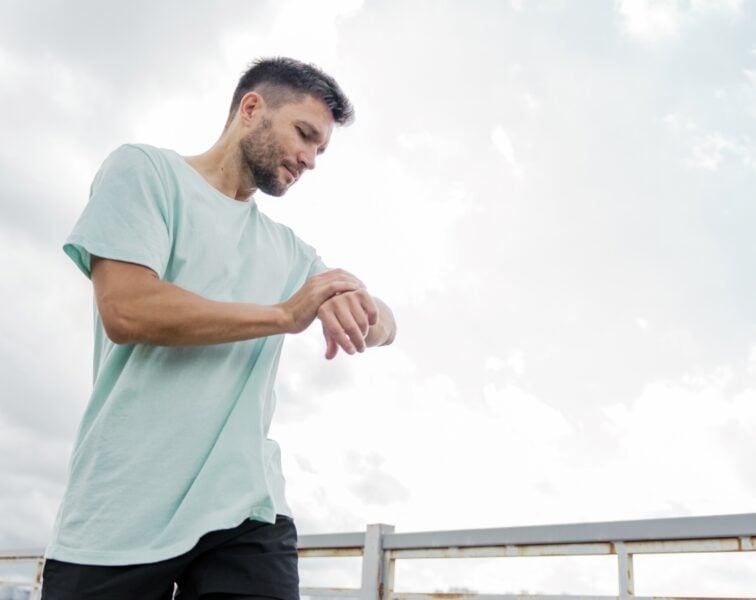Max Diehn is a Professor of Radiation Oncology at Stanford and a clinical radiation oncologist specializing in lung cancer. Max’s research focuses on developing novel methods for detecting circulating tumor DNA in the blood of cancer patients and on elucidating the molecular pathways and genes associated with cancer. His interests also include uncovering biomarkers that can predict patient survival, responses to therapy, and disease recurrence. In this packed episode, Max discusses the history of blood-based cancer screening and the importance of understanding the predictive value of tests—sensitivity, specificity, negative predictive value, positive predictive value – and how these metrics play into cancer screening. Max then goes in depth on the topic of liquid biopsies, including the history, current landscape, and possible future of liquid biopsies as a cancer detection tool. He discusses how these non-invasive blood tests can detect DNA/RNA from tumor cells released into the blood as well as the different methods one can use to predict if a cancer is present. He gets granular on the topic of cell-free DNA/RNA signature, methylation patterns, and the importance of knowing mutation information, and he ends with a discussion on the exciting future of liquid biopsies and how we can possibly get to the panacea of cancer screening.
Subscribe on: APPLE PODCASTS | RSS | GOOGLE | OVERCAST | STITCHER
We discuss:
- Max’s training that planted the seeds for development of liquid biopsies [4:30];
- Max’s decision to specialize in radiation oncology [11:45];
- A culture at Stanford that values research and physician scientists [17:00];
- The motivation to develop liquid biopsies [19:15];
- History of blood-based cancer screening and understanding the predictive value of tests [25:30];
- Current state of lung cancer and the need for better screening [32:45];
- Low-dose CT scans: an important tool for managing lung cancer but with limitations [42:00];
- Using liquid biopsies to identify circulating tumor cells [47:00];
- Liquid biopsy research moves from circulating tumor cells to cell-free DNA [1:03:00];
- Zeroing-in on circulating tumor DNA in cell-free DNA [1:10:48];
- Cell-free RNA and Max’s vision for cancer detection from a blood sample [1:22:00];
- Methylation patterns and other informative signatures found in DNA [1:24:30];
- Mutation-based methods of liquid biopsies [1:26:30];
- Understanding the sensitivity and specificity of a diagnostic test [1:30:30];
- Existing clinical liquid biopsy tests and their limitations [1:37:30];
- The future of liquid biopsies [1:44:00];
- How we get to the panacea of cancer screening [1:52:00];
- More.
Get Peter’s expertise in your inbox 100% free.
Sign up to receive An Introductory Guide to Longevity by Peter Attia, weekly longevity-focused articles, and new podcast announcements.
Max’s training that planted the seeds for development of liquid biopsies [4:30]
Max’s training at Stanford
- Peter and Max were in medical school together at Stanford
- After the 1st 2 years of med school, Peter went off into the clinical stuff while Max went off into the lab
- Most MD PhD programs split medical school in half, focusing for the 1st 2+ years on medical school classes, then doing PhD work in the laboratory, and finally going back for clinical work
- There’s an important transition point there when you’re finishing the classroom part of the medical school and deciding what lab to work in
- Max chose to do his dissertation with Pat Brown, who was a professor in biochemistry
- He was the founder and CEO of Impossible Foods until recently
- What attracted Max to Pat Brown’s lab‒ Pat had invented technology for measuring the expression of basically all the genes in the genome with a technique called DNA microarrays
- At the time, this was revolutionary
- Before, only one or a handful of genes were measured at a time
- This technology was opening up whole new fields that would allow us to learn so much
- Max’s dissertation was a little unusual; he worked on many different projects
- It was a unique time in the lab where a new technology is transformative
- It opened up so many doors simultaneously
- A new lens through which to view biology
- He immediately thought of thousands of questions that would be interesting to ask
“You have this new tool that no one’s ever had before”‒ Max Diehn
- His dissertation focused on 2 main areas‒ 1) immunology and 2) cancer biology
- These were his 2 interests coming into medical school
- One project focused on T cells, a critical part of the adaptive immune system
- He was interested to see what genes are turned on and off in T cells when they are activated
- When they are stimulated through their T cell receptor (TCR) alone or with a co-stimulatory signal
- He measured RNA
- RNA is the intermediate between DNA and proteins
- DNA microarrays are a way of measuring specific RNAs
- DNA microarrays allowed him to see hundreds and thousands of genes changing as he manipulated T cells
- He was able to build a catalog of all the genes that turned on or turned off when T cells were activated using different signals
- This catalog has been very helpful for understanding the mechanism of T cell activation
- This has gotten more interesting with the advent of immunotherapy
How difficult was it to keep the RNA intact as you cataloged the generation of mRNA from DNA as this signal of gene expression?
There’s a lot of things there that are interesting; one of them is the instability of RNA
- RNA is chemically unstable when compared to DNA and one has to be very careful to prevent its degradation
- This is a hurdle to overcome in working with RNA
- For example, in his experiments with T cell stimulation, the cells are alive
- This maintains the RNA
- Only once the cells die does degradation start to happen
- The experiment is designed carefully to immediately add solutions to protect the RNA after the cells are killed at the end of the experiment
- So there’s not time for chemical degradation of the RNA
- The other project Max worked on during his PhD was to develop a method to isolate RNA that’s stuck to the endoplasmic reticulum (ER) inside cells
- RNA encoding proteins that are secreted from cells or surface proteins, is sent to the ER
- These RNAs (and proteins) are important for diagnostic and therapeutic purposes
- He was interested in cataloging these RNAs
- There was a long procedure to purify the subset of RNA stuck to the ER
- It required a lot of work in a cold room (at 4o C) to maintain the integrity of the RNA
- He did a lot of work on methods to stabilize RNA
How much insight could you get into noncoding sequences of genes (the part that doesn’t encode protein)?
- With the technique Max was using at the time, they were focused on measuring the coding portion of the genes (the RNA transcripts that code for proteins)
- They had to decide at the beginning of each experiment, which genes to measure
- Because they had to create a probe for each gene
- Subsequently, this approach was used in some of the early work on long noncoding RNAs
- That was largely led by a former postdoc from Pat Brown’s lab who was there while Max was a grad student, named Howard Chang, who is professor at Stanford
- Max finished his PhD in 3.5 years then he went on to begin his clinical rotations
Max’s decision to specialize in radiation oncology [11:45]
Did you have a sense that you definitely wanted to be a clinician, which would mean not just finishing medical school, but then doing a residency?
- Yes, he was set on doing a residency but wasn’t sure what the focus would be
- Before med school he thought he would go to graduate school for a PhD and focus on research for his career
- But when he was a junior in college, his father was diagnosed with lymphoma
- His interactions with oncologist and the medical team revealed how little we knew about many things related to cancer
- This convinced him to be on the doctor’s side to help people, not just on the patient side with his father
- He wanted to, “Help patients at the time of their life where it might be the worst time of their life as well as to try to move the field forward to improve treatments that while they worked somewhat obviously were not good enough.”
- He came to medical school with an inkling that oncology was where he wanted to be
- What he didn’t realize early on was how many options in that there are
- He was looking at it mostly through the lens of medical oncology
- There is surgical oncology, radiation oncology, and other sorts of avenues
Max’s childhood
- Max was born in Munich, Germany and came to the US when he was 11 years old
- Initially his family moved to south Florida
- When he was a sophomore in high school, they moved to Connecticut
- He went to Harvard as an undergrad and lived in the Northeast until he came out to Stanford
Max’s clinical training
- He considered surgical oncology; he liked the procedural aspects of it
- Ultimately he decided on radiation oncology
- Initially he was leaning towards medical oncology, because that’s what he had seen through his dad’s journey
- He did a rotation in radiation oncology in large part because his wife (also a medical student at Stanford) did a year of research in the department of radiation oncology
- He really enjoyed radiation oncology from a patient care standpoint
- They would generally see less patients in a day than might be seen in medical oncology
- This was very attractive to him
“Radiation oncologists had a little more time in clinic to spend with each patients”‒ Max Diehn
{end of show notes preview}
Would you like access to extensive show notes and references for this podcast (and more)?
Check out this post to see an example of what the substantial show notes look like. Become a member today to get access.

Max Diehn, M.D., Ph.D.
Max Diehn earned his Artium Baccalaureus (AB) in biochemical sciences at Harvard in 1997. He earned his MD PhD at Stanford University in 2004, focusing on Biophysics. He completed an internship in internal medicine at Stanford in 2005 and his residence in radiation oncology at Stanford in 2009. He is a board certified radiation oncologist and Professor of Radiation Oncology at Stanford. [Stanford|Profiles]
The overarching research goal of the Diehn lab is to develop and translate novel diagnostic assays and therapies to improve personalized treatment of cancer patients. Their main focus is on the development and application of liquid biopsy technologies for non-invasive detection, monitoring, and characterization of human cancers, with a special emphasis on lung cancer. Diehn’s group is an internationally recognized leader in this field and they collaborate with investigators from around the world to apply our assays to diverse clinical problems and patient cohorts. In parallel he also studies primary and acquired resistance to anti-cancer therapies, including radiotherapy, immunotherapy, and targeted agents. He has a particular interest in overcoming resistance mediated by the NRF2 (NFE2L2)/KEAP1 pathway. His research projects always begin by identifying an unmet need in the clinical management of cancer patients. His lab uses next generation sequencing, bioinformatics, genome editing, high throughput screening, and preclinical animal models to address their research goals. Discoveries from his group are currently being tested in multiple clinical trials at Stanford and elsewhere to attempt to translate them into the clinic. [Diehn Lab]
Twitter: @max_diehn



